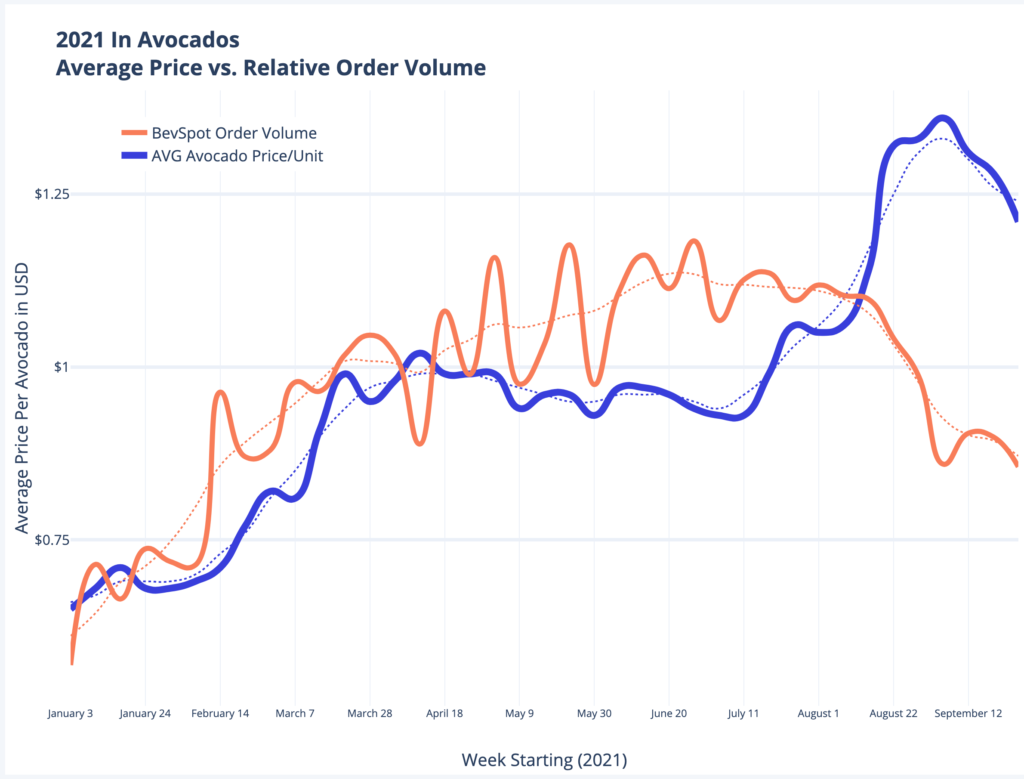

They’re an incredibly versatile ingredient that has become a staple in many traditional and fusion culinary styles. From guacamole and avocado fries to sushi and smoothies, it’s unsurprising they’re such a hot commodity. But like any other consumer good, it’s affected by the economic principles of supply and demand.
So, why do prices skyrocket from late August into fall? We did a deep dive into BevSpot food account data to see what trends we could find with avocado prices in 2021.
Using data from orders and invoices entered into BevSpot, we’ve charted the average price per avocado (in blue) as well as the relative order volume (in orange) on a logarithmic scale. This shows a correlation between demand and price, and supply from growers.

The first thing you’ll notice is a 30% jump in average price per unit paired with a proportional decrease in order volume after August 8th. Fortunately, kitchen managers using BevSpot’s Price Tracker report can keep on top of data like this to maintain profitability.
So, why do avocado prices increase so dramatically throughout August and September?
Contrary to popular perception, California is far from the market leader in volume for the U.S. market. According to the California Avocado Commission, Mexico accounts for over 77% of the avocado market, year to date at the time of this deep dive. California trails with about 11%, Peru is just shy of 8.5%, and all other growers total 3.5%.
These top producers have naturally staggered growing seasons, and that helps keep avocados available to U.S. restaurants and consumers year-round.
This leaves a period during August and September where the top three producers have reduced output leaving a seasonal demand vacuum. High demand with low supply means higher prices.
Demand vacuums like this demonstrate the importance of tracking the cost of goods used in your recipes. If your restaurant or bar does not have a good system in place to track fluctuations and drive profitability, please reach out to one of BevSpot’s representatives.
How much did you last pay for avocados? Leave a comment below.
Schedule 15mins to chat with a product specialist
Start a FREE Trial Today! BevSpot offers full product education and account setup for all customers! No card Information needed!
